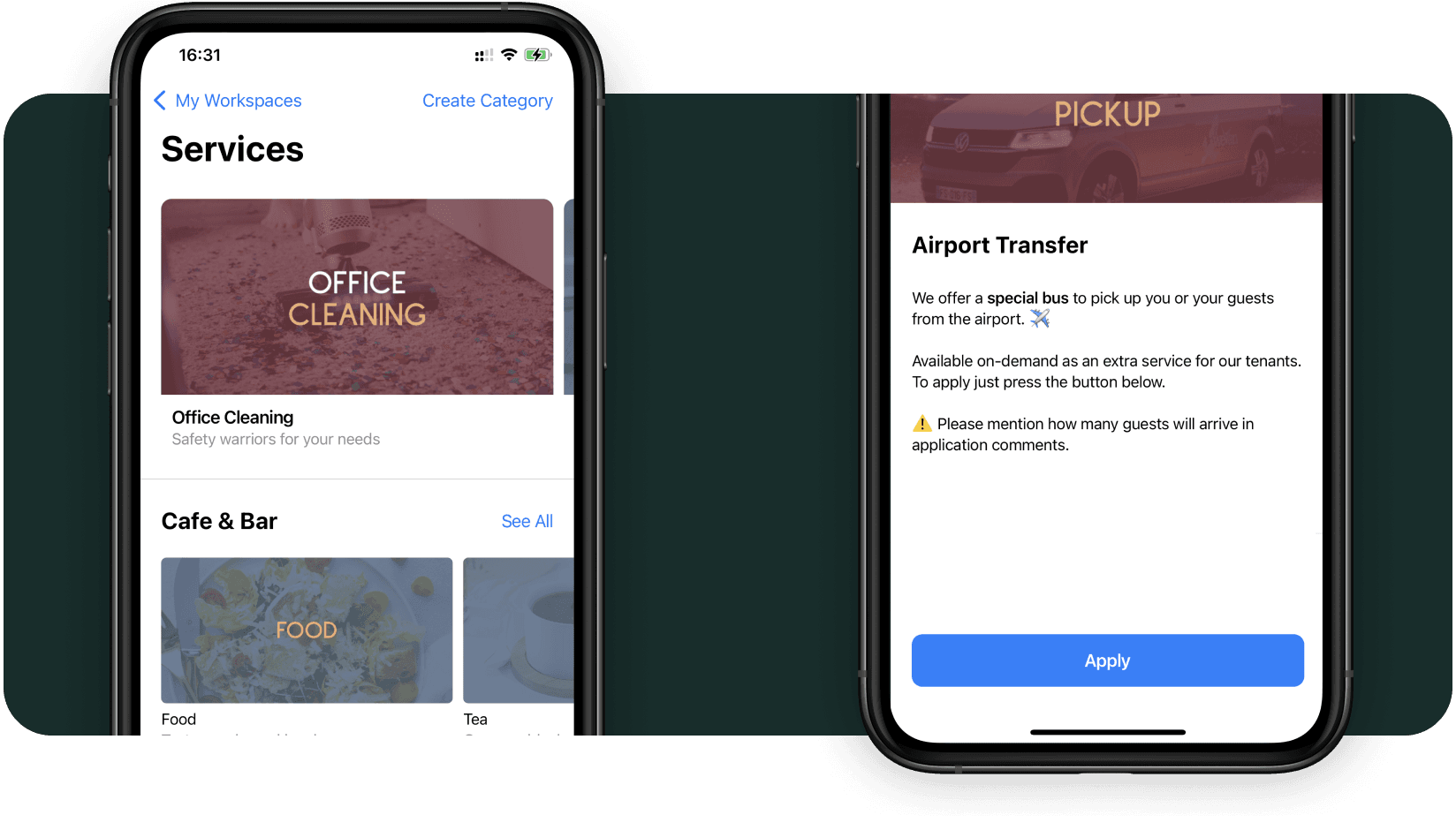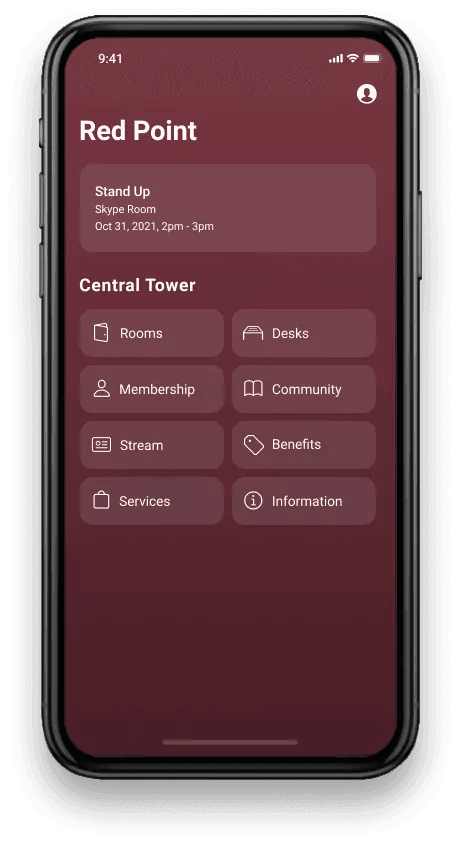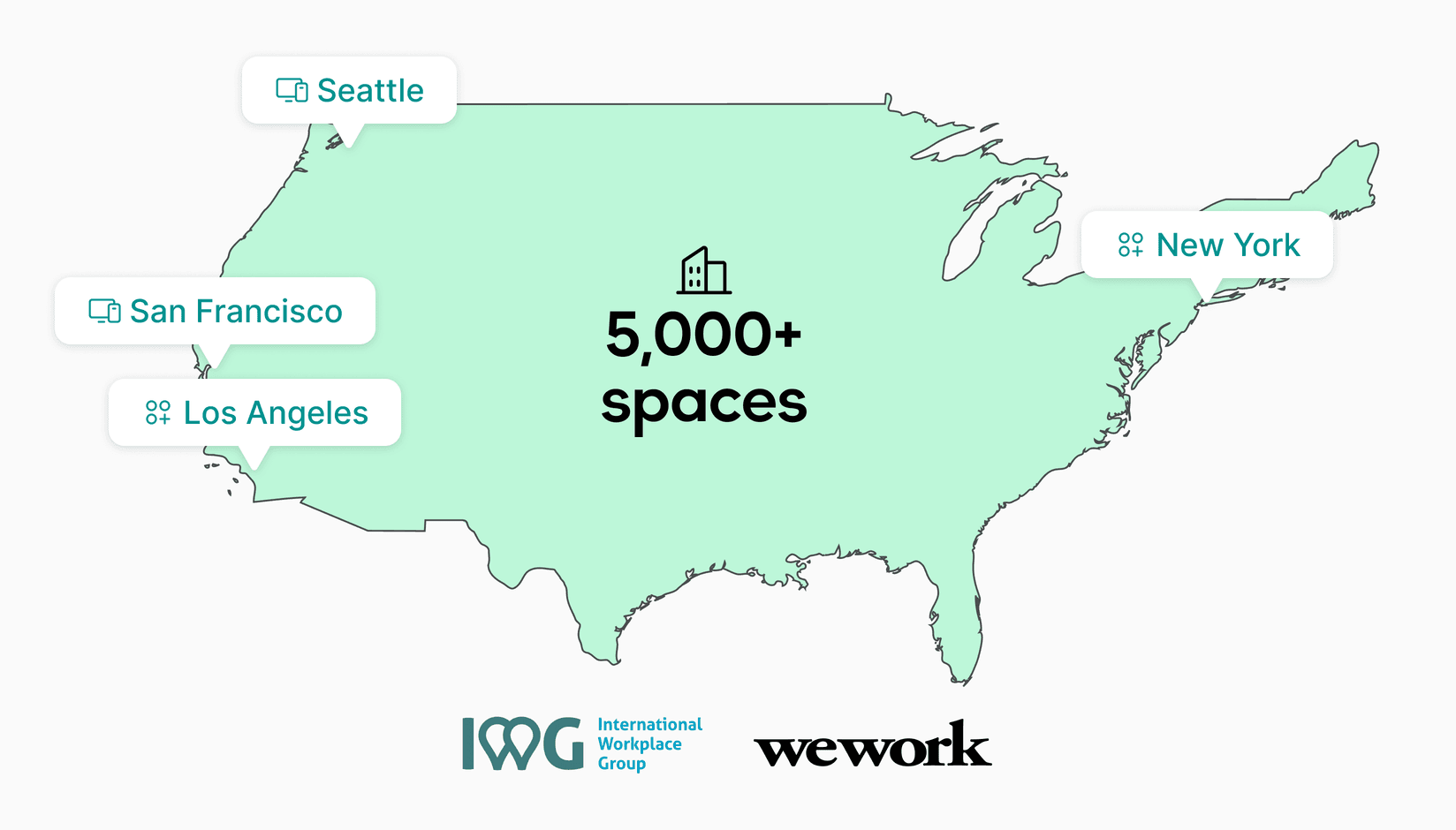- Features
- Solutions
- Pricing
- Resources
- Contact
- Book a demo

Coworking spaces are among the fastest-growing kinds of offices in commercial real estate. They make up less than 5% of the industry but can skyrocket to 30% by 2030.
This means: if you dream of launching a coworking space, you can earn profitably, widen your community’s workspace options, and promote entrepreneurial ventures and professional collaboration.
Consider these five essentials when starting your coworking business:
1. Business Plan
Crafting a clear business plan directs you in the steps to take to achieve your company’s goals. Here are some aspects to develop:
Ideal Niche and Target Community
Which types of community members is your coworking space eyeing to serve? Is it freelancers, small e-commerce business owners, or huge companies and teams?
You can also cater to life coaches, insurance agents, medical representatives, and the like. These professionals often work individually but belong to established corporations, which can mean a steady revenue stream for your business.
Consider the underserved niches and individuals in your locality or industry that collectively translate into a profitable segment.
Then ask yourself: what is their perfect coworking setting? The more you specify who your ideal community member is, the clearer your proposed pricing and marketing tactics, location and amenities choices, etc. will be.
Solid Business Model, Value Proposition, and Vision

Get a firm grasp of your planned coworking business operations and your guarantees to solve your target customer’s needs in delivering your service.
Knowing this helps you identify your unique value and strengths, possible threats, business opportunities, and likely expenses to incur.
You should also set a definite purpose for your business by answering the question, “Why am I doing this?”
Establishing your reason for opening a coworking space guides you in crafting your business strategies, developing certain values, and being single-minded with your venture’s direction.
It also helps you project a clear, solid brand image that people, especially your ideal community, will more easily understand, trust, and patronize.
Industry Analysis and Insights
Understand deeply how the coworking business is thriving in your locality and on a bigger scale (city, region, state, province, and country).
For example, the city with the highest number of coworking places is San Francisco, with a whopping 51.45 spaces for every 100,000 individuals.
Discovering statistics and other industry data and insights, especially locally, can help you directly compare your potential growth with your rivals and examine your feasibility.
Google, search online coworking group forums (such as in LinkedIn) or engage nearby coworking business owners and space managers for more insights and information.
You can also check out online surveys and coworking research studies and websites for more valuable data.
Competition Research and Identification
Refine your service offers and prices by researching and specifying your direct and indirect local competitors.
These can include the city library, coffee and dessert shops, and other coworking spaces. Note their strengths and limitations to distinguish yourself and enhance your offers.
Over time, you can even track your competitors and compare your performance with theirs, so you can continually improve your business strategies.
Best Location
When it comes to opening your coworking space, you’re never too early to start searching for available places in your locality.
You’ll need a place that perfectly suits your target members and budget and supports your business lifespan.
“The location of your coworking space can be an obvious element of your success. Before you sign a lease contract, make sure you take into consideration how much traffic the area receives, how many corporates and other businesses are in the area, and how people can get there.” — says Caroline Lee at How to Start a Coworking Space: Experts' Advice to Avoid Costly Mistakes
Get (whether by purchase, lease, etc.) an optimally-spaced workplace for your ideal community base — say, around 3,000 to 5,000 square feet.
If you plan to start small, you can hold 70 to 80 seats to earn more than your operational expenses.
Alternatively, if you have a bigger capital, go for around 5,000-square-feet locations and a few hundred seats for more massive profit margins.
Office Layout
Deciding on your coworking place’s layout relies on how it appeals to your target community members and what your intended spatial philosophy is.
If you wish to foster member interaction, avoid arranging oversized rooms and establishing objects that become barriers and space separators.
You can also offer a mix of private and interactive areas to match your members’ moods and requirements (e.g., wanting to work alone or in groups).
For instance, if you’re catering to writers, you want to maintain a quiet atmosphere conducive to concentrating, reflecting, and uninterrupted work.
You’ll also have to install cubicles to prevent any eye contact between members. If anyone wants to hold collective dialogues, provide breaking rooms.
This is why it’s crucial to know your ideal community at the onset, so you can build your office layout accordingly.
Your Name and Branding
When naming your coworking space, as with all other businesses, you think about your offered services and the brand image you want to project.
You can come up with your name in three ways:
- “Coworking” + city name. This is a common (and maybe even overused) naming method, suitable usually for startups. But it doesn’t have a distinct, memorable, recognition factor, as new industry entrants likely do that. This tends to be generic but works well for search engine optimization tactics.
- References to places with fresh outlooks on the idea of “work” (minus the idealism). Examples include: Betahouse, The Hive, IndyHall, and Citizen Space. These names are easy to remember and illustrate a modern work ethic. They can even be protected for property rights more simply, especially when more coworking businesses pop up.
- Elements of building location or history. These can include the house number, street name, historical details, and others. Keep it simple and catchy, and associate it with the coworking concept. It should also be something that similar office spaces (especially when nearby) aren’t already using.
With your name determined, you can then decide on your company logo design, text logo, and colors to distinguish your coworking space. This will be helpful when putting up your building signage, marketing materials and campaigns, business portfolio, and more.
2. Website Platform
Build your coworking space website to introduce your business offers, location, prices, and other features. Use it as well for your customers to sign up, reserve their slots, and pay.
To build that kind of site, use workspace management or ecommerce platforms. They can harmonize website design and layout, invoicing, billing, and payment capacities, appointment scheduling, community, and self-service portals, among others.
Additionally, setting up your website lets you post valuable content to insert target keywords and integrate other SEO campaigns (more on this later).
When developing your site, apply a user-friendly layout and navigation and visually appealing designs matching your branding identity.
3. Mobile App

Creating your mobile app can sound like a substantial investment when you’re still starting, but it’s not a bad idea to still consider it.
Why? Because your mobile app can further simplify and hasten your customers’ interactions with your coworking space, especially in today’s mobile-gadget-driven era.
Statistics even show that two-thirds of consumers now shop via mobile apps. This tells you how online customers find these software programs practical for conducting business transactions.
Serving as your website’s extension, your mobile app can feature these functionalities:
- Book now
- Sign up now
- Available schedules, etc.
As with your website, apply user-intuitive interfaces, designs, and navigational systems to enhance your customer experience and transactional efficiency.
Also, implement mobile testing activities to see if your app is secure, convenient, and suitable to your requirements.
Generate recurring revenue and offer exceptional customer experience at your shared or coworking space
4. Marketing Strategy
Your coworking space is not just a place for professionals to work in — it’s also your business product and service. That means you need a compelling marketing strategy to use for acquiring customers and generating revenue.
For starters, invest in social media and email marketing strategies, which help you connect with customers and grow your online network.
Optimize your site as well for local search engines by targeting profitable keywords in your location and inserting them into your written content. Doing this boosts your online visibility when potential customers look up coworking spaces in their area.
Brand advocacy and word-of-mouth marketing tactics are also powerful since people tend to believe what their trusted figures (e.g., family and peers, other customers, influencers) say and recommend.
Offer excellent service quality first so your satisfied members can post favorable ratings and reviews. Reward or give incentives also when they invite more customers to join.
Consider also offline marketing activities, such as signing up for a booth at industry fairs. Here, you can give away marketing collaterals, host games, and short Q&A discussions, and personally network with potential members and business partners.
5. Office Space Needs
List the office facilities and supplies you foresee your members needing.
For instance, internet and Wi-Fi connectivity, Voice over Internet Protocol (VOIP), and other software programs are essential for your members’ online tasks to run smoothly.
Set up ethernet cabling for wired internet connections to every private workstation and conference room. Offering income-driving VOIP is also an impressive feature for coworking-seeking corporate teams.
Other items to consider include:
- Frequently used office materials (pens, printing paper, sticky notes, stapler, pencils, etc.)
- Snacks and coffee and tea choices
- Kitchen appliances
- Extra chargers for laptops and mobile gadgets
- HDMI cables and different kinds of adapters
- Cleaning tools (dish soap, sponge, mop, multi-surface cleaner, etc.), and
- Bathroom supplies and amenities (e.g., toilet paper, bathroom spray).
Start Planning for Your Coworking Space
Your dream coworking space is not going to construct itself, so begin planning for it carefully now.
Equip yourself with these essentials and other helpful solutions to realize your business and nurture your community’s professional and collaborative environment.
The article was written by Marc Sullivan. Marc lives and breathes writing. He writes just about anything and everything under the sun from digital marketing, web development, and cryptocurrencies among other things.
Keep Reading

Get Ahead in Coworking: London Conference 2024

US Coworking Industry: Key Facts You Need to Know (Infographic)

The Future of Coworking: Adapting to the Rise of Hybrid Work Models

